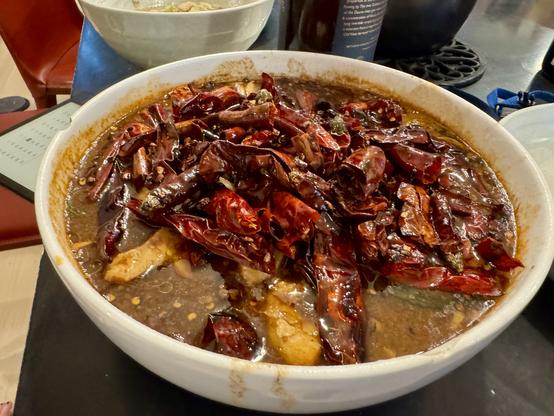@skinnylatte @irene oh! I have a whole theory about abstraction levels in Chinese food names! Let me see if I can remember it...
Level 0: the name of the dish describes how to prepare it (e.g., 回鍋肉, twice cooked pork; 樟茶鸭, camphor-smoked duck)
Level 1: the name of the dish specifies the flavors but leaves the exact implementation unspecified (e.g., 孜然羊肉, cumin lamb)
Level 2: the name of the dish specifies an abstract notion of the flavor only (e.g., 怪味鸡, strange-flavor chicken)
Level 3: the name of the dish conveys only a shared understanding of the subjective experience of eating the dish (e.g., 口水鸡, mouth-watering chicken)
Level n: the name of the dish describes something that could possibly be considered food but, thankfully, is unrelated to the one actually served (e.g., 夫妻肺片, husband and wife's lung slices)
Level ∞: the name of the dish is fully abstract and bears no relation to the dish or any other food (e.g., 佛跳墙, Buddha jumping over the wall; 蚂蚁上树, ants climbing a tree)















